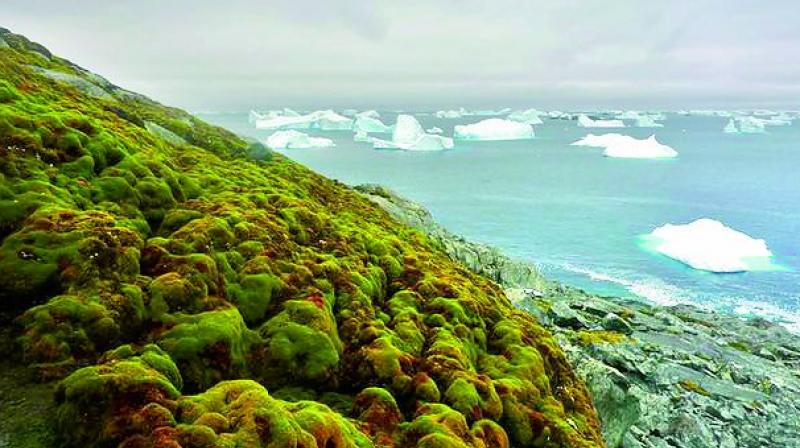Climate change turning Antarctica green

Plant life on Antarctica is growing rapidly due to climate change, according to a new study that found a sharp increase in biological activity on the continent in the last 50 years.
A team, including scientists from the University of Exeter in the UK, used moss bank cores — which are well preserved in Antarctica’s cold conditions — from an area spanning about 644 km.
They tested five cores from three sites and found major biological changes had occurred over the past 50 years right across the Antarctic Peninsula. The rate of moss growth is now four to five times higher than it was pre-1950.
“Temperature increases over roughly the past half century on the Antarctic Peninsula have had a dramatic effect on moss banks growing in the region,” said Matt Amesbury, of the University of Exeter.
“If this continues, and with increasing amounts of ice-free land from continued glacier retreat, the Antarctic Peninsula will be a much greener place in the future,” he said.
Recent climate change on the Antarctic Peninsula is well documented, with warming and other changes such as increased precipitation and wind strength. Weather records mostly began in the 1950s, but biological records preserved in moss bank cores can provide a longer-term context about climate change.
The scientists analysed data for the last 150 years, and found clear evidence of “changepoints” — points in time after which biological activity clearly increased — in the past half century.
“The sensitivity of moss growth to past temperature rises suggests that ecosystems will alter rapidly under future warming, leading to major changes in the biology and landscape of this iconic region,” said Professor Dan Charman, who led the research project in Exeter. “In short, we could see Antarctic greening to parallel well-established observations in the Arctic.”
Plant life only exists on about 0.3 per cent of Antarctica, but the findings provide one way of measuring the extent and effects of warming on the continent. The research was published in the journal Current Biology.

